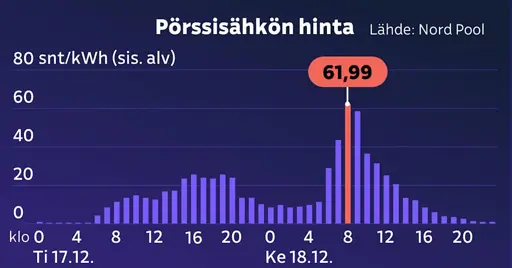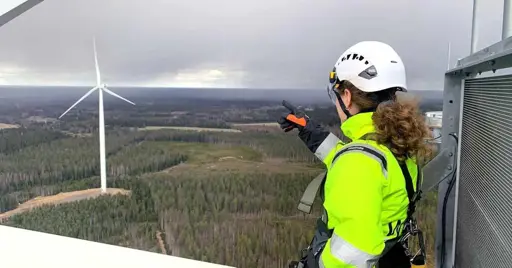- 287 Posts
- 896 Comments

 7·11 hours ago
7·11 hours agoI wonder how much money that accounts for
Let’s throw some numbers around. Quick google search says that federal workers make $35/hour on average and that there’s about 3 million workers. Let’s be generous for Elmo and say that only half of the workers received and/or reacted to the email and that they only spent an hour on responding, attending to meetings with colleagues and so on about the case.
So, 1.5 million hours * 35 dollars per hour equals to cool 52,5 million. Adjust numbers on how ever you like. 50-200 million is a big pile of cash, but in the US government scale that’s not much above a rounding error. Pretty hefty bill anyways from a single email sent by a guy whose authorization on anything is pretty much just ‘trust me bro’.
Can you switch to console? Try ctrl+alt+F2 when the system is booted up and log in to that.
I suppose some package update was interrupted or crashed. You can attempt to re-run what’s missing with ‘sudo apt-get install’ and ‘sudo dpkg-reconfigure -a’. And, assuming your console access works, you can at least check log files on what’s wrong, but for that I don’t think any generic ‘read /var/log/syslog’ file is too helpful as there’s a ton of stuff and with things like journalctl it’s pretty difficult to navigate around if you don’t know what you’re looking for.
And also, more details would be helpful. What you mean by ‘enters a loop’, what it actually says that went wrong and so on.

 1·2 days ago
1·2 days agowould he be forced to end it if the war ends
I don’t know about Ukrainian laws, but I’d suppose so. At least that’s how martial law works in general, it’s not easy to activate and there’s written rules on when it has to end. And also I don’t think it’s the president alone who can decide for that to either way.
But again, I don’t really know about their laws, just bits and pieces i’ve learned from the news. I barely know our own martial laws (or our law in general).

 9·2 days ago
9·2 days agowhat allows him to remain president ends
Strictly speaking, the war is not the (whole) thing which allows him to stay in office. His era continues up to the point when the successor is elected and there can not be legal elections during martial law. So, yeah, the war is the reason, but once the peace is achieved it still requires proper elections (no idea how long that takes in Ukraine as a whole) and then he’s released from the office. So even if the peace came tomorrow I think it would take in minimum at least a few months until elections are open. Possibly even more as significant amount of Ukrainians are out of the country right now and they might want to secure option to vote for them too which might take quite a bit longer than few months.
But I have no doubt about it, they’ll have fair elections when it’s possible, Russia will try to influence the hell out of it and in the end Ukraine has new, fairly elected, president eventually.

 23·2 days ago
23·2 days agoThat would be a damn good deal and I’m sure Zelenskyi would be more than happy to sign the papers if there was no doubt of the outcome.
But as of now I’m pretty sure that announcement is mostly just global politics with a hint of fools hope of it actually going trough. He’s just stating loud and clear to the world that if it’s his (forcefully) prolonged position which is the main issue on the war then he’ll happily stand down, but on the terms which are acceptable to the Ukraine.
Heck, after all he’s been doing, I wouldn’t be surprised if he agreed to go into trial in russia (and sacrifice himself) if it meant lasting peace for Ukraine. It obviously doesn’t come to that, it’s not really about who’s sitting on president office, but in theory I wouldn’t be surprised.

 3·3 days ago
3·3 days agoDammit, my organic memory failed yet again. It’s been a while since I’ve seen that prompt (and I have agreed to that as well at least few times).

 12·4 days ago
12·4 days agoDoes anyone sell ‘Yes, Do As I Say!’ stickers?
You could possibly recover from that on console, just install few metapackages. And have backups.
I meant that the technology itself is reliable. And you can do self hosting just fine too, I’ve been doing it since 2010 or so, but running a local smarthost which sends messages via reputable SMTP provider works just fine too. Or even directly interacting with the SMTP provider from all the applications you’re running.

 20·4 days ago
20·4 days ago“Giving” as in “US military paid them and Elon took credit for it”.

 17·4 days ago
17·4 days agoElections are suspended because no one has time to “run an election”.
And also (if I’ve understood correctly) it’s straight up impossible by Ukrainian laws to run elections when martial law is active. They’ll hold democratic elections eventually and choose the next president but until then Zelenskyi is sitting president. Things run just like their laws mandate.
In some other country there’s memecoin agency operating without any legal oversight with considerable power, maybe look on to that first…

 4·4 days ago
4·4 days agojoten yhteistyö puolueiden kesken voi olla tilaisuuden mahdollistava tekijä.
Näin on. Ja vaikkei tilaisuutta ihan pilkulleen yhteistyössä järjestäisikään niin se on usein kaikile eduksi jos tilaisuudet järjestetään samaan aikaan ja kohtuu lähekkäin kun ihmiset lähtevät paremmin liikkeelle. Ja toisekseen ei pienillä paikkakunnilla ole puoluepolitikointiin samalla tapaa tilaa. Jos valtuustossa istuu neljästä-viidestä eri puolueesta 20 valtuutettua yhteensä niin kovin vahvoja kuppikuntia ei oikein mahdu rakentamaan ja keskustelua on pakko käydä yli puoluerajojen, ainakin jos yksittäisenä valtuutettuna meinaa esitystensä taakse saada kannatusta.

 1·4 days ago
1·4 days agoAdvertising spam.

 7·4 days ago
7·4 days agoEi oo selvää onko kaapeli katkipoikki vai vaurioitunut jollain tavalla
Ylen uutisessa on päivitettyä tietoa:
Cinian liiketoimintajohtaja Hannu Muikku vahvistaa , että Suomen ja Saksan välisessä kaapelissa on havaittu vaurio, mutta sanoo, että kaapeli ei ole poikki.
– Vaurio on havaittu, mutta se ei vaikuta tällä hetkellä kaapelin yli välitettävään liikenteeseen millään tavalla, Muikku sanoo.
Commodore 64 is a home computer released at 1982. Modern expansions for it allows the thing to actually have tcp/ip stack and it can run things like telnet, but your single mastodon server, in comparison of what was available in 1980s, is pretty much equal of the whole bandwidth and storage of the internet (or arpanet, depending on how you want to time things).
Mastodon server requires (roughly) at least 2 gigabytes of memory and 20 gigabytes of storage. And with that it needs at least dual core 2GHz CPU to run it.
Commodore 64 had 1Mhz. A million hertz sounds like a big number, but we’re talking (at minimum) of two processor cores running with 2000 million hertz. Also, C=64 had 64 000 bytes of memory while the absolute minimum to run mastodon instance is 2 000 000 000 bytes.
And then there’s the storage. Your minimum mastodon instance should have at least 20GB of storage. 1541 used 5,25" floppy disks which could store up to 170 kilobytes. So you’d need someone to change disks as needed on a over 400 meter tall tower of floppy disks.
So, please tell me again where to get disk images to run mastodon server on a C=64 and how you just know that plain old email is garbage and old people just don’t know what they’re talking about.
you very much can not run mastodon server on a Commodore 64.
You absolutely can.
Ok. Send me the link of disk image of that. I have C64 laying around with 1541 disk drive. I’ll set up a public mastodon instance running on a C64 with a webcam stream of the setup.
I have no idea what any of that means…
That checks out. You conveniently skipped the part where I requested a single messaging solution which works with either modern android/ios devices or with anything you’ll find in your dad’s(or grandads I guess) drawer, can manage multiple recipients, escalations to sms/home automation bells, works reliably even if the uplink goes down for few hours and so on.
And no, you very much can not run mastodon server on a Commodore 64.
But you seem like a young and enthustiatic individual. I was one “a few” years ago. Keep it going, but that arrogant attitude won’t get you anywhere. Email has been a thing since the 1970s and there’s a reason why it’s still going strong. Things like XMPP has been around for a good while and there’s a reason why they’re not even close of overtaking email as a primary communication technology around.
You’ll live and learn. My guess is that when you reach my age, email is still working just fine and majority of the hot stuff which is around right now has faded to the history.
aren’t reliant on any particular company or service, and are easier to run and manage without requiring approval from your ISP
What other than email provides that? Browser notifications generally don’t work on mobile. Most of the common instant messengers rely on a single instance running the thing if you’re not suggesting sending messages via IRC or XMPP (or matrix or…) which have their own problems. App notifications require that you have the thing which app is running to be available and online and they more often that not require some spesific device. Also even if you had linux desktop “app” it requires that the software is running.
Also I have not met an ISP which would block sending email via gmail/amazon/protonmail/whoever. Sure, my current ISP blocks tcp/25 to the world by default, but you can request to open that too if you really want to and ports 587 and 465 are open, so you can work around that if you don’t want a smarthost for some reason.
With other options you wouldn’t need to because they already provide the features you’re looking for in those apps.
Which other protocol allows notifications at the same time on all the mobile devices, all the workstations and allow easy way to send the very same message to arbitary amount of recipients to all of their devices? I had email on a palm pilot device at 2001 or so, over mobile data with IRDA and you can read email even with Commodore 64 if you really want to (well, to be more spesific, use C=64 as an terminal for *nix server to access email, I think there’s no actual IMAP/POP client for it). There’s just no way for any other modern service to even try to compete with versatility with email.
And then there’s the more sopisthicated approaches like pushing email trough however complex procmail/perl/python/whatever scripting you like where you can develop quite literally whatever you can imagine. Set up a old fire alarm bell, hook it up to your home automation, process incoming emails and if it’s severe enough turn the bell on. Sure, at least a some of that is possible via instant messengers too, but with email I can be pretty sure that if I write a script today for it it’ll still run quite happily for the next 10-15 years.
Please do tell me which of the modern messaging alternatives offer all of that.
It just boggles my mind that we haven’t moved away from this archaic technology.
None of the alternatives are as standardized as plain old email. You can use whatever you like to read them, you don’t have to rely on a single company like Meta with WhatsApp for communication, it’s easy to use, pretty damn reliable and fault resistant and just ticks all the boxes you’ll ever need for a simple message delivery.
Personally I would absolutely hate if software started to offer notifications only on slack or signal or whatever. Just let me have my email and I can then read it with a browser in library, on my cellphone, on my desktop and laptop and on pretty much every other internet connected device on the planet. And if I want, I can pass that trough to teams, sms, all the messaging platforms and even straight to my printer should I need to. With other message delivery options that’s often either pretty difficult or straight up impossible.
You only need SMTP server, so the inbox size doesn’t matter (assuming you have another email where you want to receive those notifications). And even if you have separate inbox for alerts it’s quite unlikely that you get hundreds of megabytes worth of alerts every day and they’re pretty much useless after a day or two so there’s no need to keep them around.
In here ISPs commonly have SMTP service included on their service, so that’s worth checking. Beyond than that, any at least somewhat reputable provider will do as long as they provide traditional SMTP service. One option is to use a relay host on local network which sends mail trough a smart host so you can just use local unauthenticated SMTP server for all the things you run and that one service will then push the messages to the internet.










Lompakolla äänestäminen toimii.